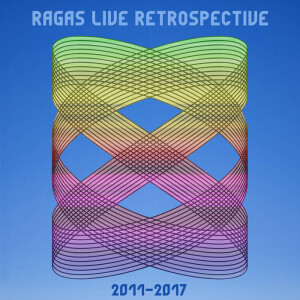 The ancient musical form of the Indian subcontinent known as raga is experiencing a renaissance in New York. It’s been going on for at least a decade now, and in 2011 performers descended on a New York City radio station to perform a nonstop 24-hour festival of ragas. It was an unlikely hit, and it’s been going on for seven years now. In 2016 the festival made the leap from the radio station to a live concert setting and now broadcasts in front of a live audience every year.
The ancient musical form of the Indian subcontinent known as raga is experiencing a renaissance in New York. It’s been going on for at least a decade now, and in 2011 performers descended on a New York City radio station to perform a nonstop 24-hour festival of ragas. It was an unlikely hit, and it’s been going on for seven years now. In 2016 the festival made the leap from the radio station to a live concert setting and now broadcasts in front of a live audience every year.
The latest of these festivals took place in October 2018. This year to celebrate the festival, organizers put out a recording that features some of the most arresting performances from 2012 through 2017. It was a massive undertaking, and it produced a massive archive of recordings that are now available digitally to raga fans everywhere.
“Putting out a digital 24-track album with over 15 hours of music is ambitious,” says one of the artistic directors, Brooklyn-based percussionist Sameer Gupta. “Unlike the short songs one typically finds on their digital streaming stations, Indian Classical Ragas are meant to be a longer immersive journey; a journey with a purpose. With this album release fans will get closer to the essence of what makes Indian Classical music powerful, as well as why Ragas Live Festival is a unique and transformative experience.”
Another of the artistic directors is Arun Ramamurthy, the New York carnatic violinist and one of my favorite musical discoveries of the past decade. “As curators, we honor the ragas’ connections to nature and program classical artists at the opportune times,” Ramamurthy says. “But what makes this festival so special is that we balance classical sets with innovative raga-inspired projects that interpret traditional material in a highly creative way. This balance over the course of 24 hours allows the listener to traverse a wide spectrum of sound, going deep into traditional ragas while also experiencing more experimental interpretations and reimaginations of the Indian classical form. It’s a cathartic experience.”
The varied spectrum of sounds and styles of traditional ragas and “raga-inspired projects” is indeed cathartic, and astounding. As Ramamurthy says, “experimental interpretations and reimaginations.” One of these is the set by his trio, with music mostly drawn from their 2014 release Jazz Carnatica, featuring fine versions of several tracks from that album with all-new interpretations that highlight the similarities between jazz and raga, both of which feature extensive improvization within established frameworks.
Even more experimental are the atmospheric tone poem “Twilight Lake” by Go: Organic Orchestra and the Brooklyn Raga Massive ensemble; “Changes/Vanotamba” by Afrika Meets India; a suite by the New York ensemble Karavika that uses instruments in the Western violin family plus Indian percussion to blend classical and folk traditions; another by Akshara, another New York group that blends rock and folk with Indian idioms, drawn from their 2017 debut release In Time; and most especially “Lissajous Curves,” a half-hour drone-based tone poem by the Unstruck Sound ensemble that may be my favorite musical work of the year. Oh, and don’t miss “Ganesh Paran,” in which members of the Pradhanica Dance and Music Company chant in unison a tabla piece note-for-note.
More traditional offerings include ragas by Krishna Bhatt and Nitin Mitta; Mitali Bhawmik; Anupam Shobhakar and Shankh Lahiri, and a host of other musicians. One that particularly caught my attention was one billed as “Tabla Solo in Tintal” by a very young Vivek Pandya, which features gentle, improvised harmonium along with the tabla. Here’s a promo video of Pandya from 2017.
With many pieces lasting 30-40 minutes and even up to nearly an hour, this release is really only practical in digital form. It’s a rich, creative and infinitely rewarding exposition of the current state of the New York raga renaissance. The recording is available on Bandcamp, Spotify, Amazon and probably other platforms. More about the festival is available on its website.
(Ragas Live, 2018)
